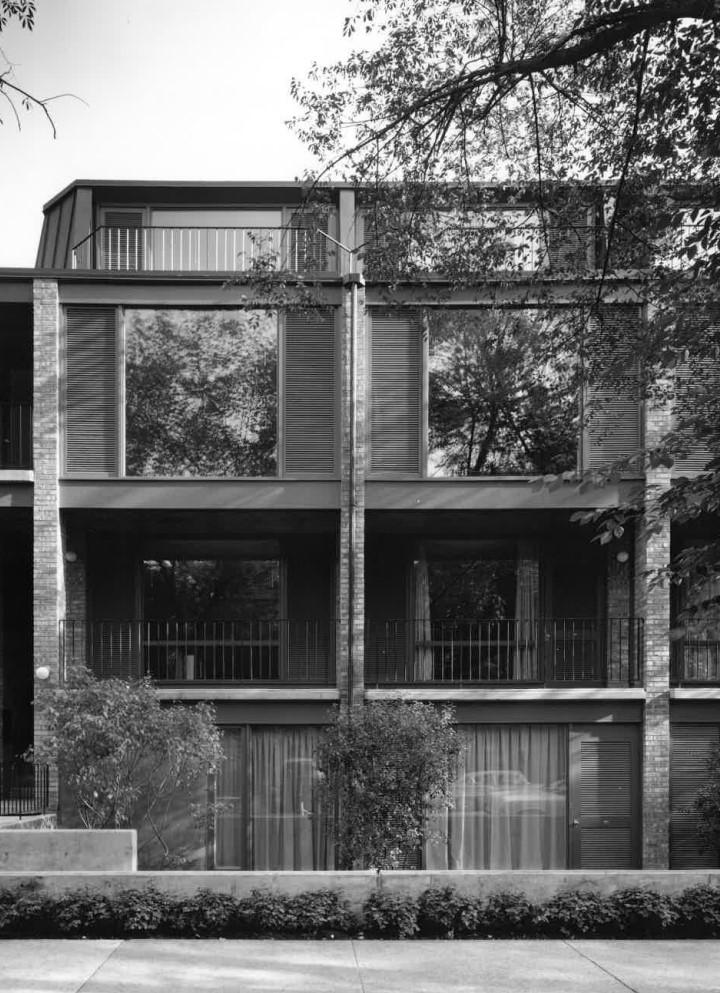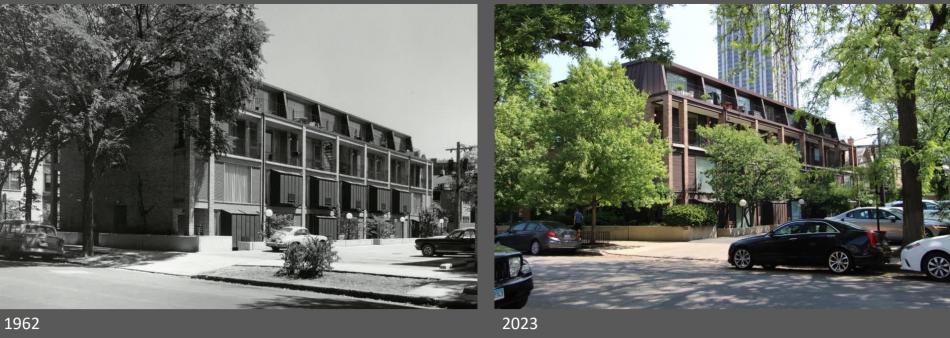The Commission on Chicago Landmarks has approved a preliminary landmark designation for the Eugenie Lane Apartments. Located at 235 W. Eugenie, the rental residences were built in 1962 with a design from Ben Weese.
The building meets Criterion 1 for heritage as it reflects the architectural heritage of Old Town in the 1960s and 1970s, when the neighborhood established itself as a place for artists and the creative community. During the 1960s and 1970s, Chicago architects of the modern era like Ben Weese designed small-scale residential infill buildings in the historic 19th century neighborhood adding an important layer to its built environment.
Meeting Criterion 4 for exemplary architecture, the modern-era building has a clear expression of its residential function, absence of ornament, and large windows. The design of the building references architectural elements from the 19th century neighborhood in which it stands including its Chicago common brick walls, louvered accents and standing-seam metal mansard roof. Built at a time when new apartments tended to be in tall towers, the design of the Eugenie Lane Apartments settles for tree-top height and a more human scale.
The final criterion the project meets is Criterion 5 for being a work of a significant architect. Ben Weese designed the Eugenie Lane Apartments toward the beginning of a long and rich career in architecture. Though the building may be considered one the architect’s early works, the design of Eugenie Lane Apartments reflects principles that Ben Weese would hone throughout his career including the preference for simple, vernacular materials; responding to context, and a willingness to borrow from history while designing in a modern idiom. Ben Weese was a member of the Chicago Seven, a group of young Chicago architects that formed in the 1970s to educate the public about a more pluralistic view of Chicago’s architecture and to explore new directions at an inflection point in American architecture at the end of the modern movement.
Meeting the Integrity Criterion, the Eugenie Lane Apartments retains more than sufficient historic integrity to express its historic and architectural value to the City of Chicago. It remains in its original location and the residential setting around the building has changed little since the building was constructed in 1962. Changes to the exterior include the recent repair of louvered ventilation panels to match the original. Based on its evaluation of the Eugenie Lane Apartments, the Commission staff recommends that the significant features be identified as all exterior elevations, including rooflines, of the building.
Moving forward, landmarks staff will present a final report to the Commission before it votes on a final landmark recommendation to send the proposed designation to City Hall. A vote from the Committee on Zoning and the full City Council will be needed to officially designate the building as a Chicago landmark.











